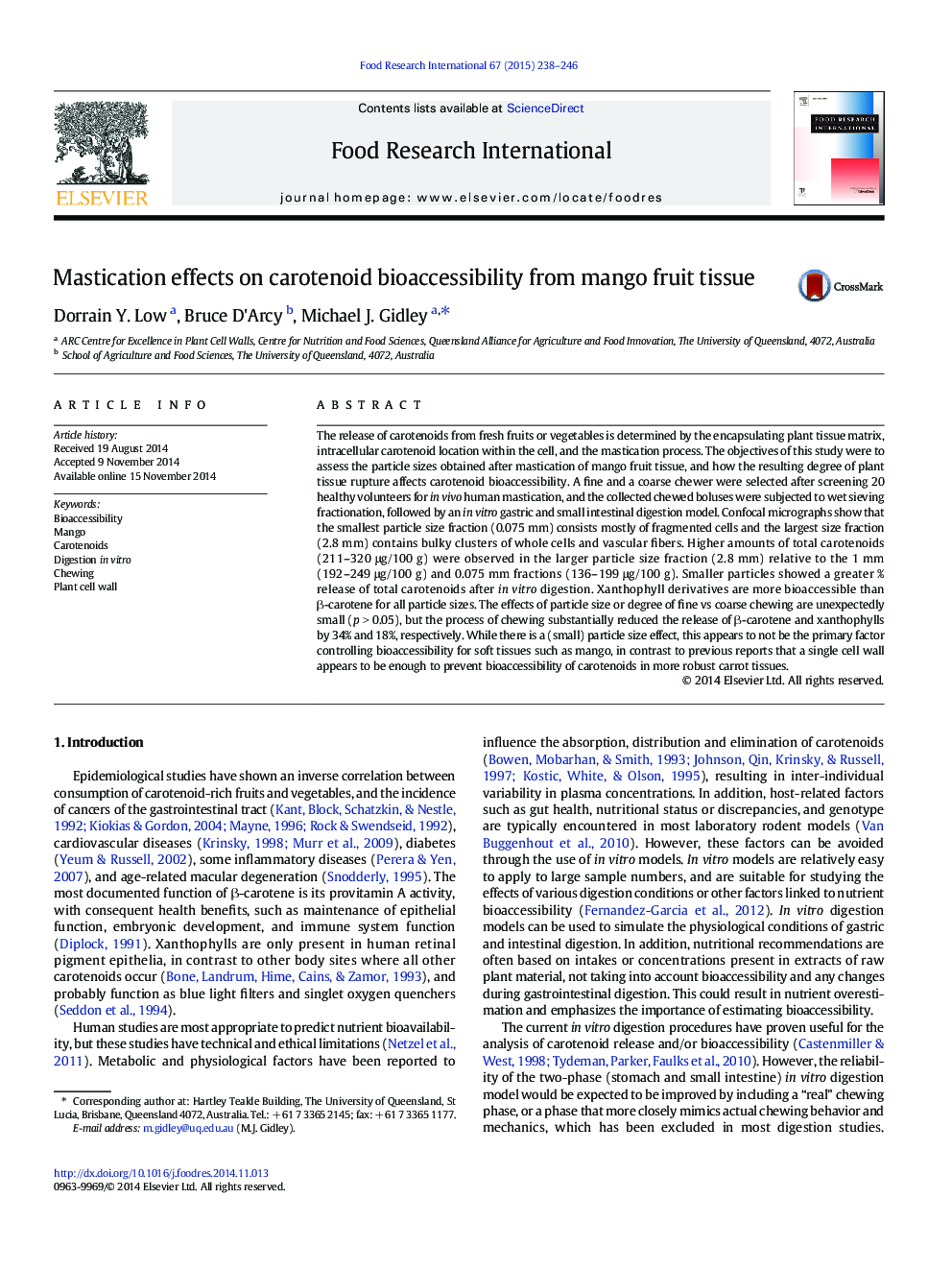| کد مقاله | کد نشریه | سال انتشار | مقاله انگلیسی | نسخه تمام متن |
|---|---|---|---|---|
| 6396073 | 1628479 | 2015 | 9 صفحه PDF | دانلود رایگان |
- Effect of particle sizes after chewing on mango fruit carotenoid bioaccessibility studied.
- Carotenoids are retained within mango cellular structures after chewing.
- Larger particles contain more carotenoids after chewing and digestion.
- Similar β-carotene and xanthophylls % release for each chewed particle size fraction.
The release of carotenoids from fresh fruits or vegetables is determined by the encapsulating plant tissue matrix, intracellular carotenoid location within the cell, and the mastication process. The objectives of this study were to assess the particle sizes obtained after mastication of mango fruit tissue, and how the resulting degree of plant tissue rupture affects carotenoid bioaccessibility. A fine and a coarse chewer were selected after screening 20 healthy volunteers for in vivo human mastication, and the collected chewed boluses were subjected to wet sieving fractionation, followed by an in vitro gastric and small intestinal digestion model. Confocal micrographs show that the smallest particle size fraction (0.075 mm) consists mostly of fragmented cells and the largest size fraction (2.8 mm) contains bulky clusters of whole cells and vascular fibers. Higher amounts of total carotenoids (211-320 μg/100 g) were observed in the larger particle size fraction (2.8 mm) relative to the 1 mm (192-249 μg/100 g) and 0.075 mm fractions (136-199 μg/100 g). Smaller particles showed a greater % release of total carotenoids after in vitro digestion. Xanthophyll derivatives are more bioaccessible than β-carotene for all particle sizes. The effects of particle size or degree of fine vs coarse chewing are unexpectedly small (p > 0.05), but the process of chewing substantially reduced the release of β-carotene and xanthophylls by 34% and 18%, respectively. While there is a (small) particle size effect, this appears to not be the primary factor controlling bioaccessibility for soft tissues such as mango, in contrast to previous reports that a single cell wall appears to be enough to prevent bioaccessibility of carotenoids in more robust carrot tissues.
Journal: Food Research International - Volume 67, January 2015, Pages 238-246
